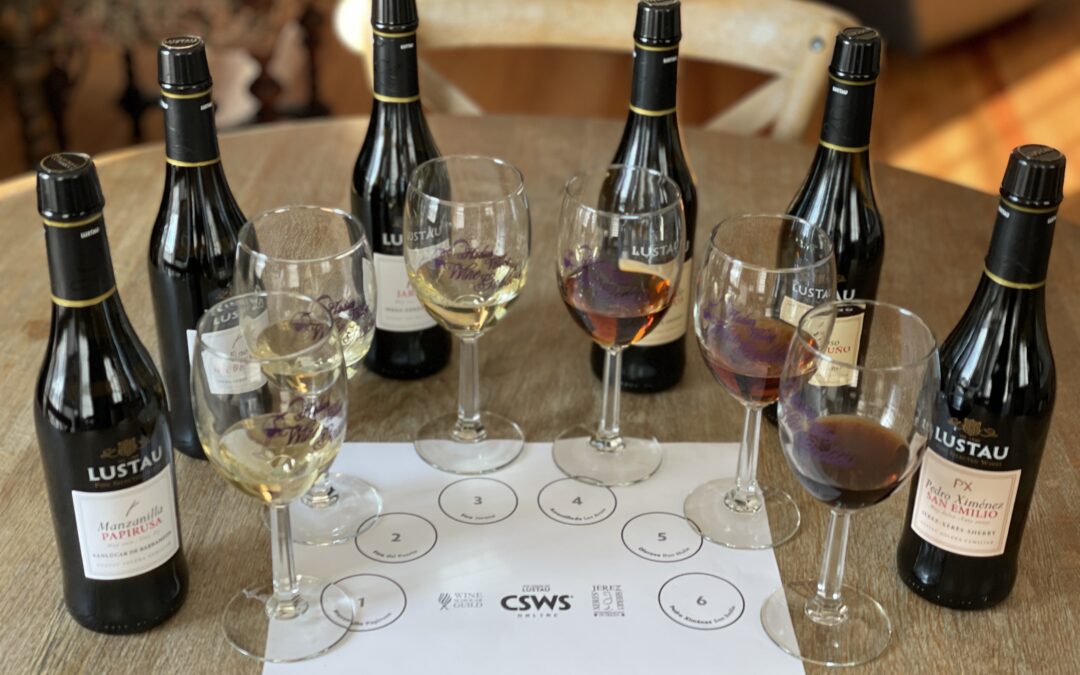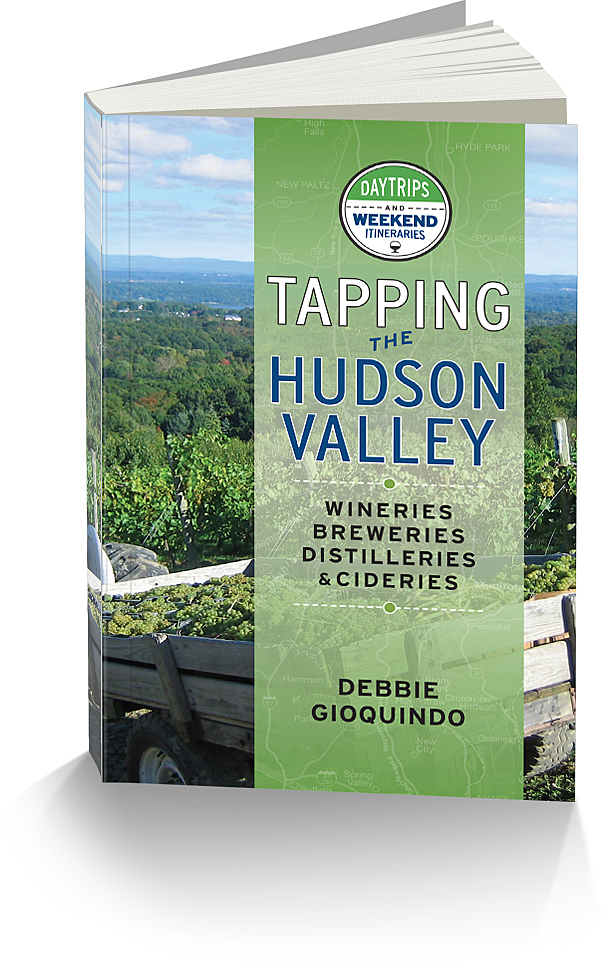Sherry, when I hear that word I think of cooking Sherry. The big bottles you purchase from the liquor store that says “Dry Sherry” or “Cream Sherry.” Next, I think about the Sherry my grandmother drank, Harvey’s Bristol Cream, which by the way is really good. But, I never understood Sherry.
Fast forward about 10 years ago I was judging a 3-day wine competition in New York City. I had a flight of Sherry and there was one Sherry that stood out. It was an Oloroso Sherry. I was impressed! It was the last flight of the day and I insisted on finishing the glass. We rated it a 98. It was from that day I knew I had to learn more about Sherry.
I signed up for the Certified Sherry Wine Specialist course offered through the Wine Scholar Guild in conjunction with The House of Lustau. I sat through a 2-hour class on Monday, January 10, and then there was another 2-hour class on Friday, January 14. The first hour was instruction and tasting and the last hour was the exam. I stress exams and I cleared my schedule that week so I could study. I read the manual, wrote notes, and stressed.

I am happy to report, not only did I pass, but I passed with Honors!!! I am now a Certified Sherry Wine Specialist (CSWS)
Here are some facts you may not know about Sherry:
- Serve Sherry in a white wine glass.
- The first press of the Palomino grapes are used for Fino (a dry Sherry)
- The second press of the Palomino grapes are used for Oloroso (a dry Sherry)
- The third press is used for distillation and the fourth for vinegar.
- Fino and Manzanilla are fortified with grape neutral spirits until they reach 15% alcohol and biologically aged under a veil of flor (yeast)
- Manzanilla is Fino produced in the Sanlucar de Barrameda
- Oloroso goes through oxidative aging and is fortified to 17% alcohol so the flor doesn’t survive
- Palo Cortado and Amontillado begin aging as Finos under flor. During the process when the flor is still present but the wine doesn’t meet the expectation of the winemaker it will then be aged oxidatively and called Palo Cortado. In the case of Amontillado, the flor is very thin or not present during tasting and is then aged oxidatively.
- Sweet Sherry is made with Moscatel and Pedro Ximenez grapes.
- Medium Sherry base wines are Amontillados or Olorosos with Pedro Ximenez or Moscatel added. Sugar content is between 5 & 115 g/l
- Cream Sherry has a base of Oloroso with Pedro Ximenez or Moscatel or both added. Sugar content is between 115 & 140 g/l
Now let’s talk Sherry with food. Before this class, I would never have thought to pair Sherry with food but it pairs very well with many dishes.
- Fino & Manzanilla’s pair well with seafood, cold soups, Iberian ham, fried codfish oysters, sushi & smoked salmon
- Amontillado and Palo Cortado pair well with spicy foods, cream of mushroom soup, bluefish, turkey, cheddar and sheep cheeses, steak tartare, albondigas, Indian and Thai food.
- Oloroso think game. Roasted duck, pheasant, wild boar, lamb and steak. Hard cheeses like manchego, parmiggiano.
- Medium and Cream Sherries pair well with soft cheeses like brie and camembert, pumpkin pie, tiramisu, red fruits and rice pudding
- Moscatel and Pedro Ximenez pairs well with dark chocolate, creme brulee, brownie, cheesecake, citrus fruits, stinky cheese (stilton, roquefort, gorgonzola), vanilla ice cream. My favorite is making a deconstructed ice cream sandwich with gingerbread cookies, vanilla ice cream drizzled with Pedro Ximenez.
There is so much more about Sherry. This gives you a good start. Pick up a bottle of Sherry and let me know what you think.


